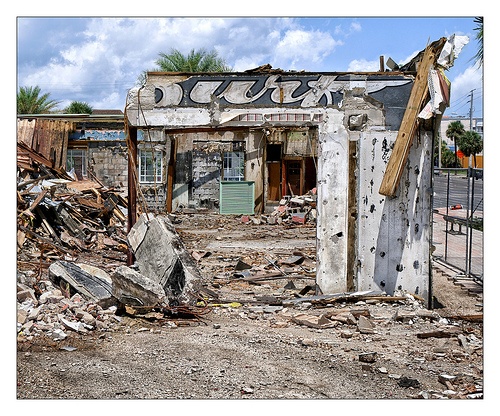 One of new Environmental Protection Agency (EPA) administrator Scott Pruitt’s many initiatives has been to change his agency’s approaches to cleanups under the national Superfund law. He announced several basic policy changes in May, and convened a Superfund Task Force to develop detailed recommendations. The task force issued its report late in July, offering 42 recommendations. These are summarized below.
One of new Environmental Protection Agency (EPA) administrator Scott Pruitt’s many initiatives has been to change his agency’s approaches to cleanups under the national Superfund law. He announced several basic policy changes in May, and convened a Superfund Task Force to develop detailed recommendations. The task force issued its report late in July, offering 42 recommendations. These are summarized below.
Administrator Pruitt’s May Guidance and Request
Mr. Pruitt centered his May memo on the idea that Superfund site-related processes are too slow: “The process of evaluating the contamination at a site and developing the appropriate remedy can take years - if not decades-delaying remediation of the site and withholding the full beneficial use of the area from the local community.” To raise Superfund’s overall priority level within EPA’s activities, and to attempt to clean up sites faster in order to recycle them for marketable uses, he announced three steps:
-
Assigning himself to personally rule on site cleanup plans budgeted above $50 million, by narrowing longstanding delegation from program and regional officials, to less expensive cleanups
-
Requiring those officials to coordinate cleanup plan development more closely with his office
-
Convening the Superfund Task Force to evaluate additional programmatic changes to Superfund cleanups – I discuss these recommendations below
Superfund Task Force’s July Recommendations
The Task Force defined five goals to pursue, and assigned EPA personnel to each – “upwards of 80” in total. Members also received and considered “many unsolicited, but welcome, letters and white papers were received from industry, trade groups and individual companies.” The Task Force enumerated a total of 14 strategies under these goals, and made 42 specific recommendations. Collectively, these encourage EPA to make broader and more effective use of existing Superfund site-remediation and reuse policies, to expand those policies, and to increase capabilities within the agency and affected communities and stakeholders. In summary, they are:
-
Goal 1: Expediting Cleanup and Remediation
-
Strategy 1: Evaluate and accelerate National Priorities List (NPL) sites to completion. The NPL contains the most contaminated and hazardous sites, so a site that qualifies is likely to remain on the list for decades. Elements of this strategy are intended to accelerate remedy selection and implementation processes, and to expand project tracking to ensure attention to milestones and progress.
-
Strategy 2: Promote the application of adaptive management at complex sites and expedite cleanup through use of early/interim RODS and removal actions. According to the report, “Adaptive management requires the development of a clear site strategy with measurable decision points, and focuses site decision making on a sound understanding of site conditions and uncertainties.” The Task Force asserts that more vigorous use of interim and step-by-step milestones and decisions will speed progress, particularly at complex sites.
-
Strategy 3: Clarify policies/guidance to expedite remediation. This strategy provides general (and some specific) recommendations to reduce ambiguities and inconsistencies in Superfund-related administrative policies, and to make these clarified policies more expeditious.
-
Strategy 4: Use best management practices, systematic planning, remedy optimization, and access to expert technical resources to expedite remediation. Recommendations include wider use of state-of-the-art techniques and expertise (including private sector).
-
-
Goal 2: Reinvigorating responsible party cleanup and reuse
-
Strategy 1: Encourage and facilitate responsible parties’ expeditious and thorough cleanup of sites to effect reuse more quickly. Recommendations cite specific administrative policies (including response orders, and streamlining and reducing recoverable oversight costs from cooperating parties) and encourage EPA to expand and accelerate their use to provide potentially responsible parties (PRPs) with stronger incentives to accelerate private cleanup activities.
-
Strategy 2: Create oversight efficiencies for PRP lead cleanups. Recommendations focus on further delegation of oversight to local agencies and third parties.
-
Strategy 3: Promote redevelopment/reuse of sites by encouraging PRPs to invest in reuse outcomes.
-
-
Goal 3: Encouraging private investment
-
Strategy 1: Use alternative and non-traditional approaches for financing site cleanups. A single recommendation encourages EPA to explore Environmental Liability Transfer (ELT) approaches and other risk management tools at PRP cleanups.
-
Strategy 2: Streamline the process for comfort letters and settlement agreements with third parties.
-
Strategy 3: Optimize tools and realign incentives to encourage third-party investment. Recommendations are to increase use of settlements that provide these incentives (particularly liability waivers) and to create more, and to revise enforcement policies to reduce potential liability.
-
Strategy 4: Address liability concerns of local governments.
-
-
Goal 4 – Promoting redevelopment and community revitalization
-
Strategy 1 – Facilitate site redevelopment and support ongoing information sharing. Recommendations are to build EPA and other agency capacity to facilitate local participation and redevelopment activities, and to establish special programs covering the 20 NPL sites with the best redevelopment potential.
-
Strategy 2: Utilize reuse planning to lay the foundation and set expectations for site redevelopment. Recommendations are to expand local planning capacities and public-private partnerships.
-
-
Goal 5: Engaging partners and stakeholders
-
Strategy 1: Key stakeholder engagement. Recommendations are to expand outreach and communication strategies, with local communities and with federal agencies at federal facility NPL sites.
-
What’s Next?
Administrator Pruitt accepted the Task Force report with glowing public thanks, and agency management are now considering which steps to take and how. Because the Task Force’s approaches seem consistent with the Trump administration’s priorities, it seems likely that many will be incorporated into ongoing Superfund oversight – although it’s not clear how this redirection of agency priorities and resources fit with proposals to shrink the agency dramatically (I discussed the President’s proposal to cut EPA’s budget by 31% here).
Self-Evaluation Checklist
Is the organization involved with planning or execution of cleanup at any site on the Superfund National Priorities List (NPL)?
-
As a potentially responsible party (PRP) or responsible party?
-
As a contractor or other service provider?
Is the organization considering or conducting any (re)development activities at a location containing or affected by an NPL site?
Where Can I Go For More Information?-
EPA Superfund program webpage
-
Administrator Pruitt’s memorandum (5/22/17)
Specialty Technical Publishers (STP) provides a variety of single-law and multi-law services, intended to facilitate clients’ understanding of and compliance with requirements. These include:
About the Author
 Jon Elliott is President of Touchstone Environmental and has been a major contributor to STP’s product range for over 25 years. He was involved in developing 13 existing products, including Environmental Compliance: A Simplified National Guide and The Complete Guide to Environmental Law.
Jon Elliott is President of Touchstone Environmental and has been a major contributor to STP’s product range for over 25 years. He was involved in developing 13 existing products, including Environmental Compliance: A Simplified National Guide and The Complete Guide to Environmental Law.
Mr. Elliott has a diverse educational background. In addition to his Juris Doctor (University of California, Boalt Hall School of Law, 1981), he holds a Master of Public Policy (Goldman School of Public Policy [GSPP], UC Berkeley, 1980), and a Bachelor of Science in Mechanical Engineering (Princeton University, 1977).
Mr. Elliott is active in professional and community organizations. In addition, he is a past chairman of the Board of Directors of the GSPP Alumni Association, and past member of the Executive Committee of the State Bar of California's Environmental Law Section (including past chair of its Legislative Committee).
You may contact Mr. Elliott directly at: tei@ix.netcom.com

